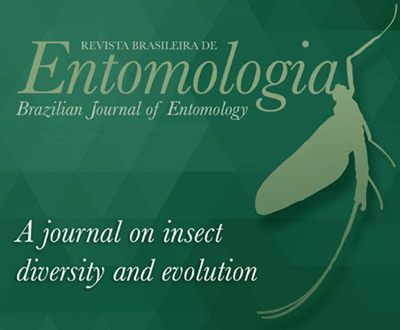Fig. 1
Geographic distribution of the D. willistoni species subgroup, according to Spassky et al. (1971)Spassky, B., Richmond, R.C., Pérez-Salas, S., Pavlovsky, O., Mourão, C.A., Hunter, A.S., Hoentgsberg, H., Dobzhansky, T., Ayala, F.J., 1971. Geography of the sibling species related to Drosophila willistoni, and of the semispecies of the Drosophila paulistorum complex. Evolution. 25, 129-143., Winge (1971)Winge, H., PhD thesis. 1971. Níveis de divergência evolutiva no grupo críptico da Drosophila willistoni. Universidade Federal do Rio Grande do Sul, Porto Alegre, Brazil., Dobzhansky and Powell (1975)Dobzhansky, T., Powell, J.R., 1975. The willistoni group of sibling species of Drosophila. In: King, R.C. (Ed.), Handbook of Genetics. Plenum Press, New York, pp. 589–622., Ehrmann and Powell (1982)Ehrmann, L., Powell, J.R., 1982. The Drosophila willistoni species group. In: Ashburner, M., Carson, H.L., Thompson Jr., J.N. (Eds.), The Genetics and Biology of Drosophila, vol. 3b. Academic Press Inc., New York, pp. 193–220., Santos and Valente (1990)Santos, R.A., Valente, V.L.S., 1990. On the occurence of Drosophila paulistorim Dobzhansky and Pavan (Diptera, Drosophilidae) in an urban environment: ecological and cytogenetic observations. Evol. Biol. 4, 253-268..
Fig. 2
Geographic distribution of the D. paulistorum superespecies, according to Spassky et al. (1971)Spassky, B., Richmond, R.C., Pérez-Salas, S., Pavlovsky, O., Mourão, C.A., Hunter, A.S., Hoentgsberg, H., Dobzhansky, T., Ayala, F.J., 1971. Geography of the sibling species related to Drosophila willistoni, and of the semispecies of the Drosophila paulistorum complex. Evolution. 25, 129-143., Winge (1971)Winge, H., PhD thesis. 1971. Níveis de divergência evolutiva no grupo críptico da Drosophila willistoni. Universidade Federal do Rio Grande do Sul, Porto Alegre, Brazil., Dobzhansky and Powell (1975)Dobzhansky, T., Powell, J.R., 1975. The willistoni group of sibling species of Drosophila. In: King, R.C. (Ed.), Handbook of Genetics. Plenum Press, New York, pp. 589–622., Ehrmann and Powell (1982)Ehrmann, L., Powell, J.R., 1982. The Drosophila willistoni species group. In: Ashburner, M., Carson, H.L., Thompson Jr., J.N. (Eds.), The Genetics and Biology of Drosophila, vol. 3b. Academic Press Inc., New York, pp. 193–220., Santos and Valente (1990)Santos, R.A., Valente, V.L.S., 1990. On the occurence of Drosophila paulistorim Dobzhansky and Pavan (Diptera, Drosophilidae) in an urban environment: ecological and cytogenetic observations. Evol. Biol. 4, 253-268..
Fig. 3
General example of external male genitalia of the D. willistoni subgroup (picture of D. paulistorum Amazonian [5]). Scale bar 50 μm. EP, epandrium; CE, cerci; SU, surstylus; PR, prensisetae; AE, aedeagus; VL, ventral lobe; HY, hypandrium.
Fig. 10
SEM of aedeagi, aedeagal apodeme and parameres of the
D. willistoni species subgroup; lateral view. Scale bar 50 μm. The strains are in brackets and listed in
Table 1. AA, Aedeagal apodeme; DP, Distiphallus; LP, Lateral projections; PA, Paramere. (A)
D. equinoxialis; (B)
D. insularis; (C)
D. tropicalis [3]; (D)
D. willistoni [4]; (E)
D. paulistorum Amazonian [5]; (F)
D. paulistorum Andean-Brasilian [6]; (G)
D. paulistorum Centroamerican [7]; (H)
D. paulistorum Interior [8]; (I)
D. paulistorum Orinocan [9] and (J) D. paulistorum Transitional [10].










